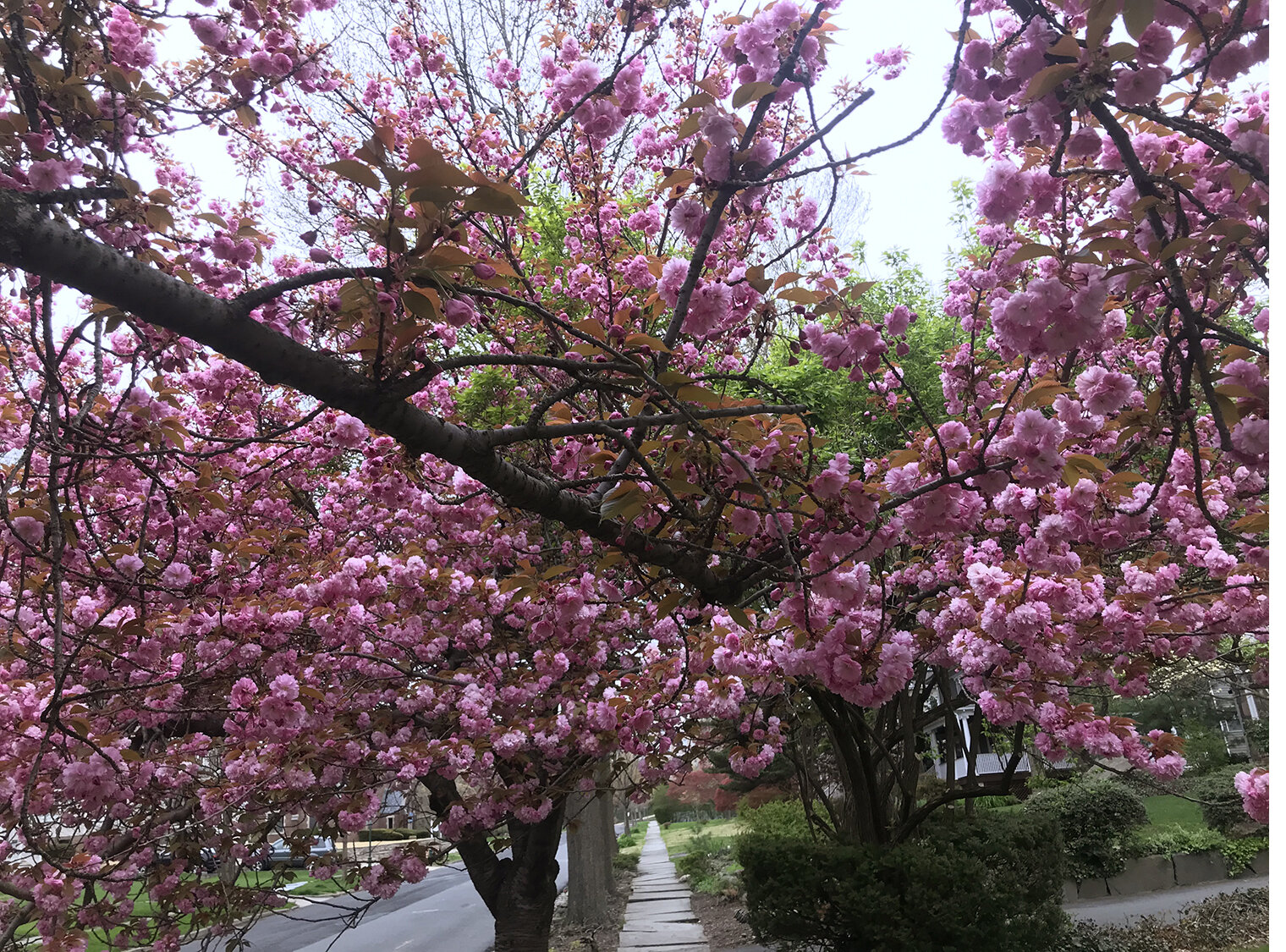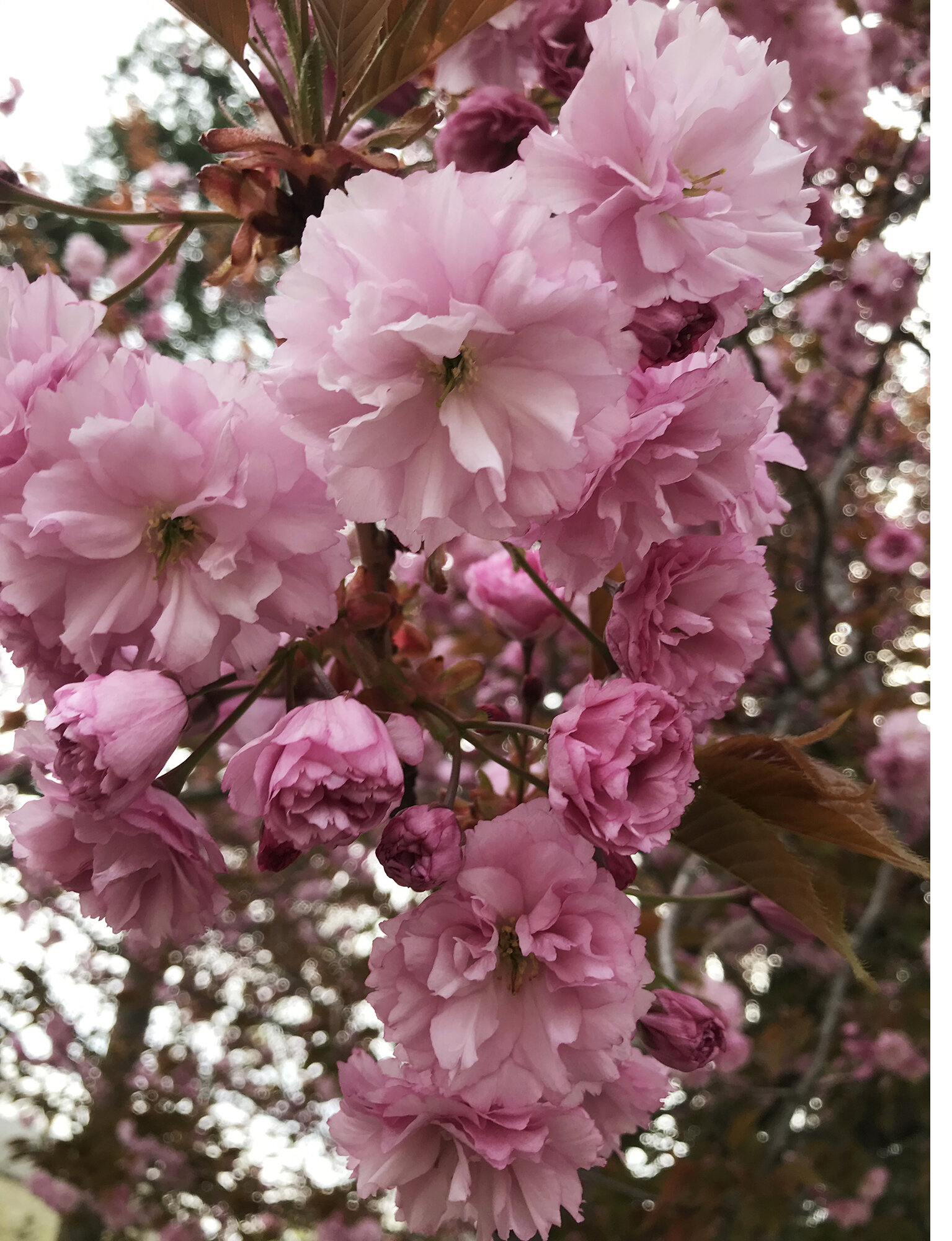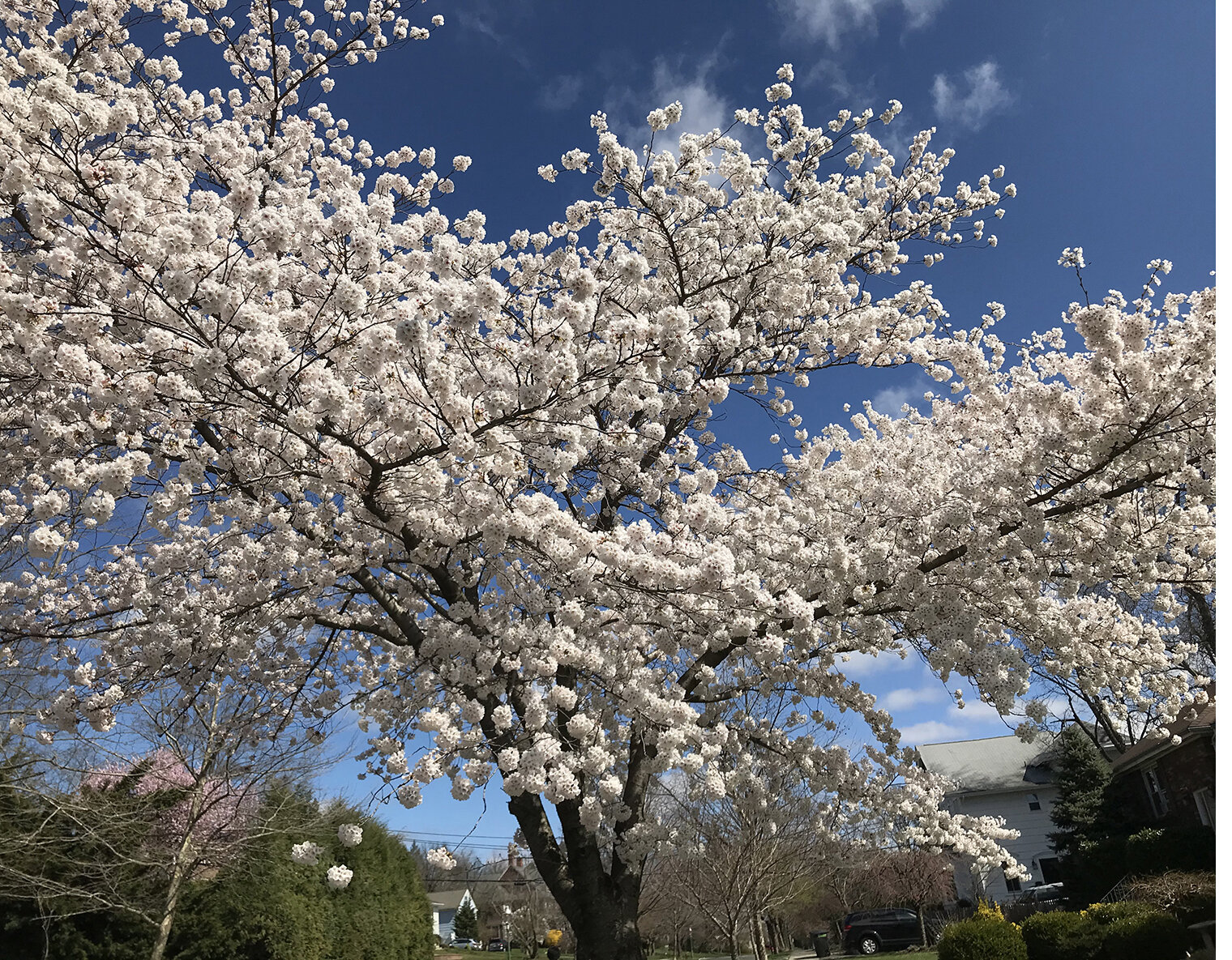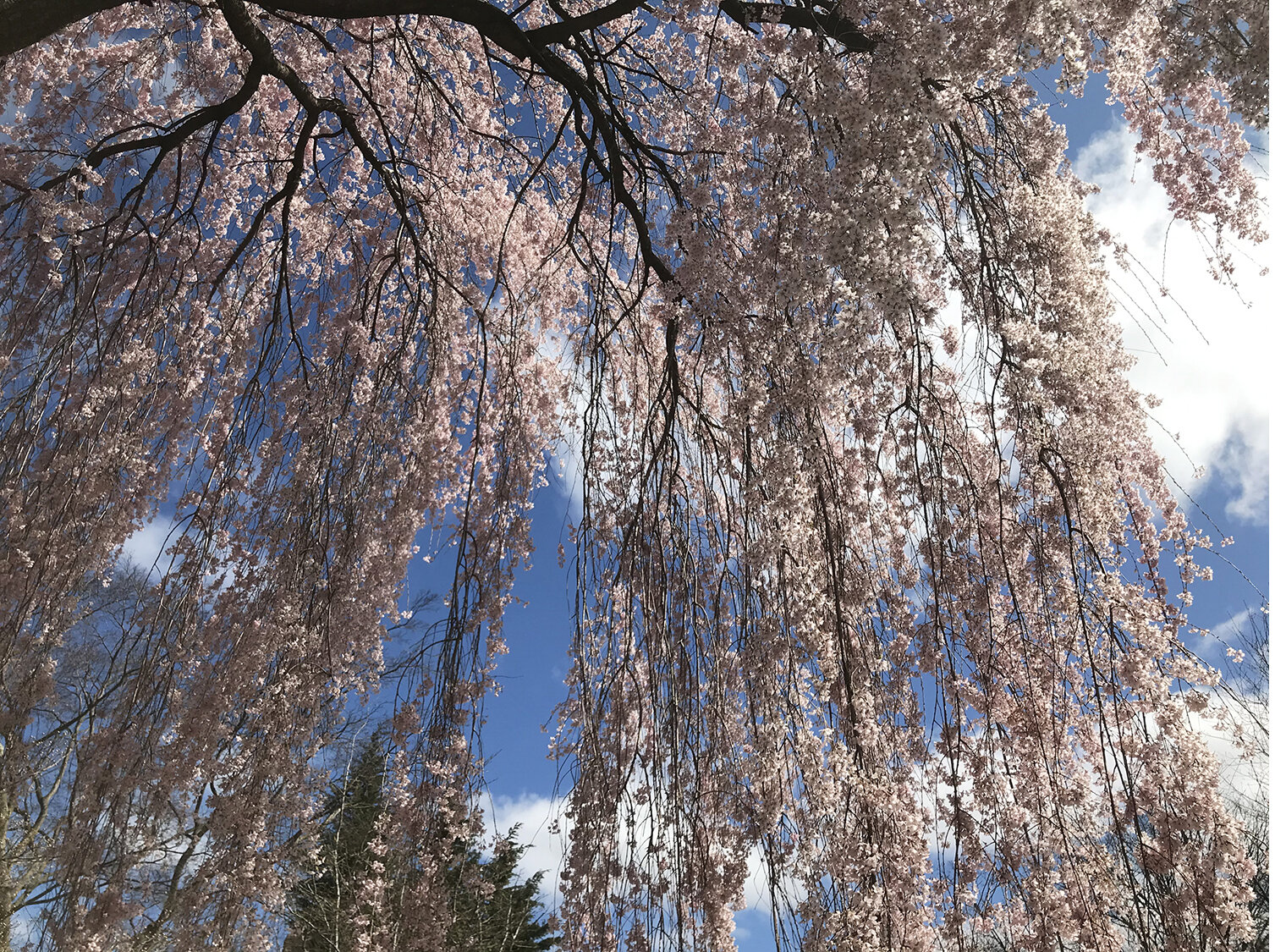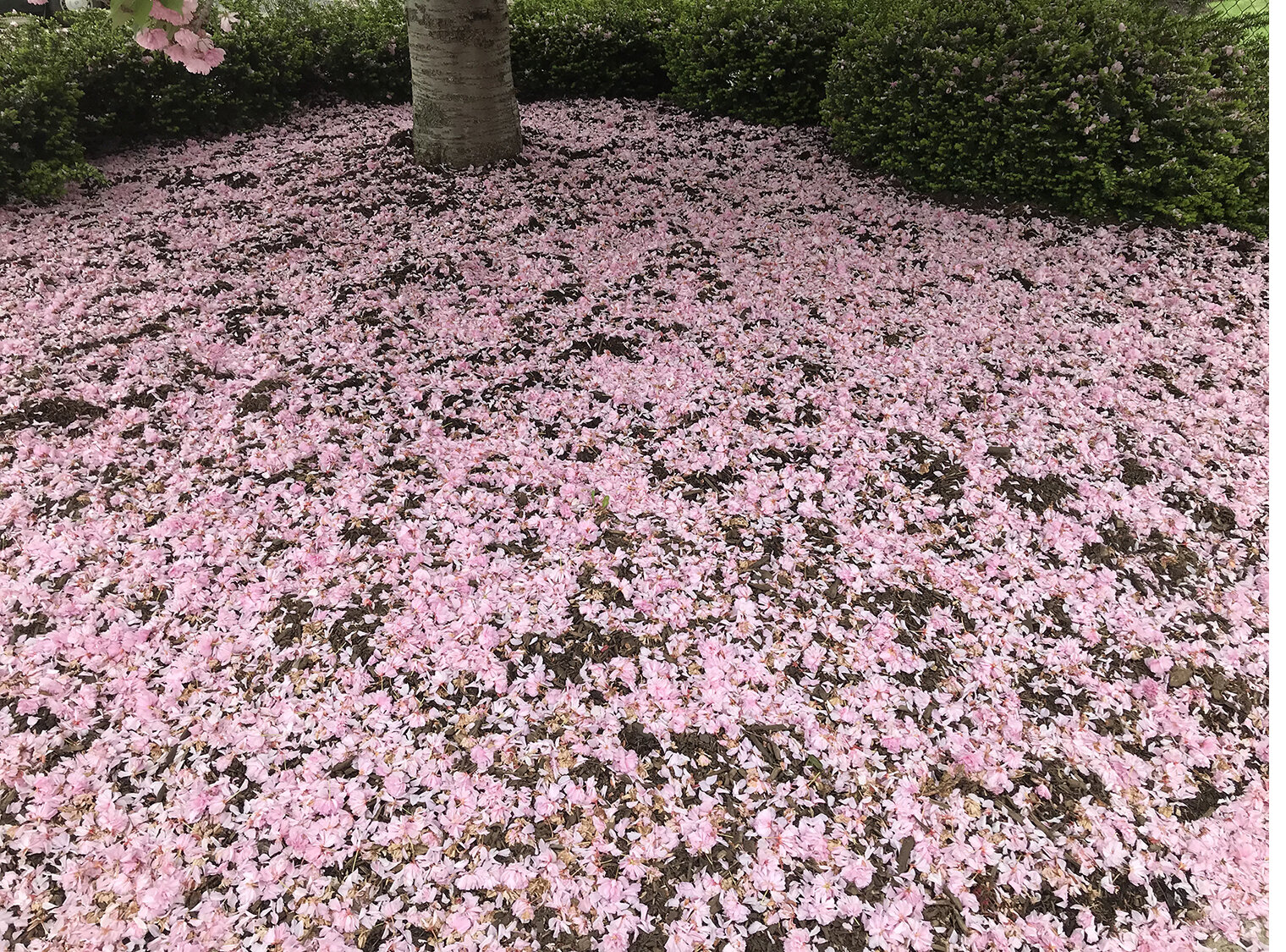Ode to Cherry Blossoms: Finding Solace in Sakura During the Pandemic
By Shankar Chaudhuri
We’re just about past the midpoint of this season’s cherry blossoms or Sakura here in the New York metro area. As usual the cherry blossoms have already arrived or are just about to arrive in their respective splendors: Yoshino Cherries with their vibrant white blossoms, Weeping Cherries (Shidare-zakura) with their look of a gently flowing waterfall and late-blooming multi-layered Kwanzans with their deep pink double blossoms resembling carnations.
How should we perceive these astonishingly beautiful blossoms during the midst of a pandemic? Just before the world was about to be plunged into World War II, this is how the New York Times reflected on the cherry blossoms on April 2, 1939:
In other world capitals there are trouble and apprehension, but in Washington the cherry trees are in bloom…it comes to Washington as an observer just now may conclude with a special grace. For at this time of the year, in spite of depressions, unemployment and unbalanced budget one catches sight of a tranquil and expectant America.
The Times’ piece also observed how the cherry blossoms served as a magnet for Americans from all walks of life and from all across the nation.
(Photos by Shankar Chaudhuri)
The fact that cherry blossoms could have a transporting effect in difficult times invariably points us to Japan. Japan has had its share of natural disasters, wars and unprecedented hardships over centuries. Yet through all its trials, tribulations and privations, Sakura has remained its national icon and source of inspiration. Sakura imagery permeates almost everything in Japan from paintings to films to food. Indeed, Sakura has remained part and parcel of the Japanese soul. As Motoori Norinaga, the eighteenth-century Japanese scholar wrote, “If I were asked to explain the Japanese spirit, I would say it is wild cherry blossoms glowing in the morning sun!”
The Japanese mindset called mono no aware, or the awareness of transience of things, informs the appreciation of and yearning for Sakura and its viewing (Hanami). Since the cherry blossoms are transient, short lived, and evanescent, they need to be fully appreciated before they disappear. To the Japanese, cherry blossoms are a mirror image of life: beautiful, but fleeting.
The transient nature of cherry blossoms makes every moment spent with or around them to be precious. The Japanese have made Yozakura, or night viewing of the blossoms, into a religion as well. Ideally, the supreme form of Yozakura would be to catch “the gleam of blossoms in the treetops on a moonlight night,” as Basho Matsuo, one of the most well- known haiku poets from the seventeenth century, described. But absent moonlights, lanterns are a good substitute in generating, and possibly accentuating the ethereal beauty of the blossoms at night. Family picnics, business dinners over sake and friendly gatherings under cherry trees are common sights in the Japanese parks and gardens to celebrate both day and night Hanami in the spring. The collective viewing is central to the celebration of Sakura.
Even the moment when the blossoms start to fall resonates with the imagination. “Without regret/they fall and scatter…/cherry blossoms,” the poet Kobayashi Issa (1763-1828) wrote in his haiku. “When the night breeze blows the blossoms, it is a very striking view to see white petals falling down like snowflakes over the lanterns,” observed an author of a Tokyo guidebook in the 1920s.
If mono no aware is at the core of what drives the Japanese reverence for the Sakura, then there is also a flip side to its fleeting appearance in that there will be the cycle of Sakuras to come. Hence even when the blossoms are gone, hazakura (cherry leaves) will soon envelop the trees to remind us of the inexorable cycle of birth and rebirth. Sakura-themed sweets, often wrapped in cherry leaves, are not only a celebration of the blossoms but are also meant to usher in the summer and a new beginning full of possibilities.
In the end what can we learn from the Japanese take on the Sakura, especially in the context of the untold pain and suffering we have been going through currently? At its core, Sakura helps to make us aware of the preciousness of our lives, and the importance of sharing in each other’s joys and sorrows. It gives us the ‘tranquility’ (to paraphrase the Times editorial) and foresight in addressing adversity with equanimity while being compassionate and helpful to others, especially the disadvantaged and the needy.
If our existence on earth is as fleeting as the short-lived cherry blossoms, then we should strive for enhancing our lives through mindful and rightful living. The Sakura metaphor helps us in regaining a proper perspective in our lives: be mindful of what is really important and be able to appreciate the fact that our well-being is intertwined with health of our community. If beauty is to be most enjoyed and appreciated collectively, then adversity can also be best addressed when we're united for our common good such as maintaining social distancing in order to protect each other and the most vulnerable. Above all Sakura deepens our understanding that hard times we are now facing - with so many tragic deaths and wide-spread unemployment - are transient and that better days are ahead of us.


